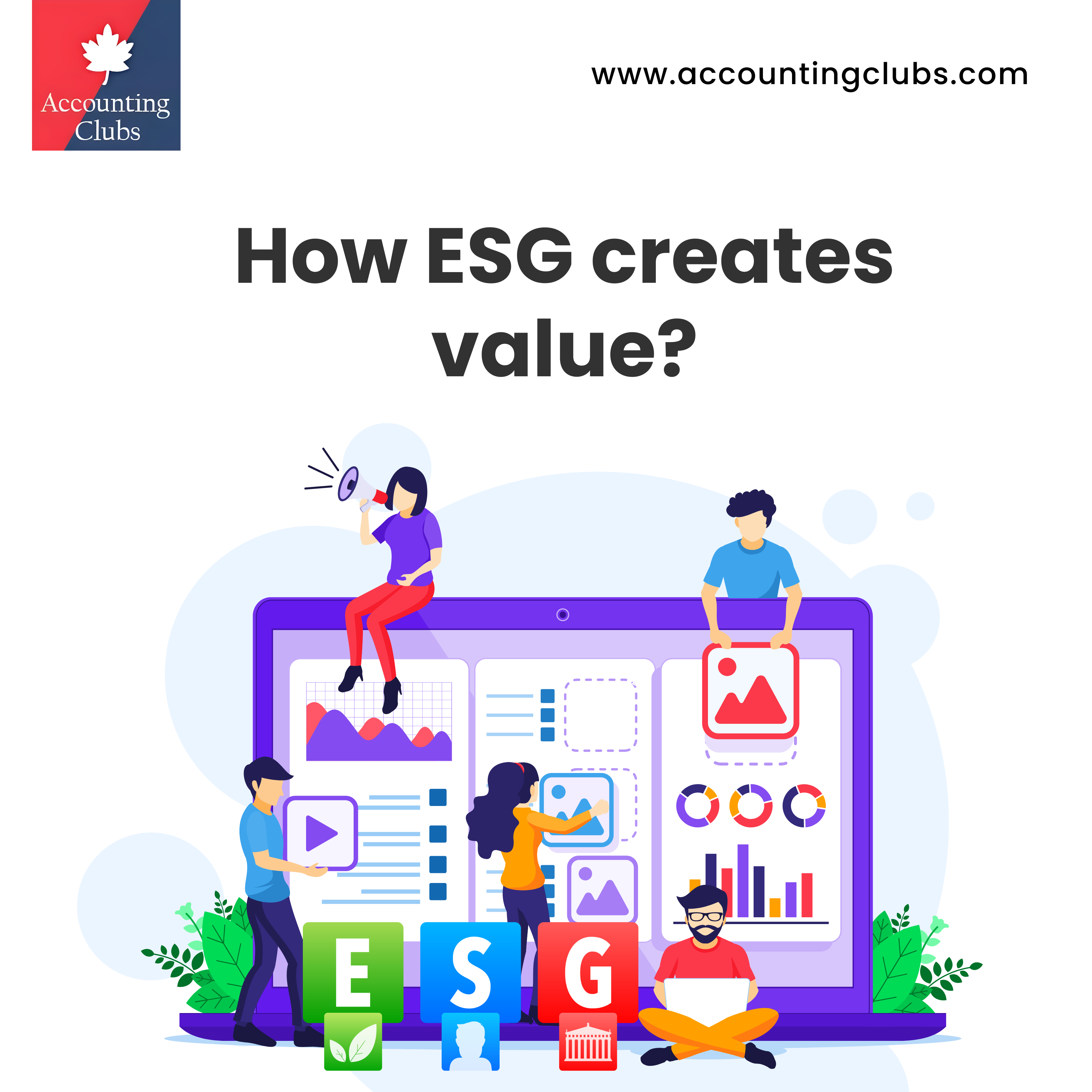How ESG creates value?

ESG is a strategic driver of wealth development, not just a compliance exercise.
Companies that include ESG in their fundamental business strategy can profit financially, improve resilience, build brand reputation, and contribute to a more sustainable future.
Research and data are increasingly supporting the favorable association between ESG and financial performance.
Effective ESG implementation involves leadership commitment, defined goals, measurement and reporting, and stakeholder involvement.
ESG (Environmental, Social, and Governance) creates value for businesses in multiple ways, including:
1. Risk Reduction and Increased Resilience: Environmental risks: Mitigating the effects of climate change, resource scarcity, pollution, and environmental laws lowers costs, prevents disruptions, and protects long-term operations.
Addressing social risks such as employee well-being, diversity, equity, inclusion, ethical sourcing, and community relations improves a company’s reputation, attracts talent, minimizes attrition, and develops stakeholder relationships.
Governance dangers: Strong governance procedures, ethical behavior, transparency, and accountability attract investors while also building trust and protecting against fraud and corruption.
2. Cost reduction and operational efficiency: Resource efficiency: Lowering energy, water, waste, and material consumption decreases operating costs and boosts profitability.
Innovation: ESG-driven product, service, and process innovation generates competitive advantages and market opportunities.
Attracting capital: ESG-focused investors choose companies with high ESG performance, which results in lower capital costs and more investment options.
3. Increased revenue and brand enhancement:
Consumer preference: Rising consumer demand for environmentally friendly products and services increases revenue growth and market share.
Increased staff engagement and productivity contribute to improved financial success.
A positive ESG reputation strengthens brand loyalty, attracts consumers and partners, and helps the company stand out in the market.
4. Capital Access: Investor Demand: Investor interest in ESG-aligned enterprises is increasing, potentially cutting funding costs.
5. Long-Term Value Creation and Sustainability:
ESG principles ensure long-term viability by tackling environmental and social concerns, encouraging innovation, and developing resilience.
Positive impact: ESG activities help to make the world more sustainable and equitable by creating shared benefits for firms, stakeholders, and society.
Whether ESG is inevitable is a difficult subject with no simple answer. While there are compelling reasons for its expanding importance, there are also hurdles and uncertainties that may hinder its widespread adoption.
Arguments for eventuality involve:
Climate change, resource scarcity, inequality, and social unrest are all important issues that need to be addressed. ESG provides businesses with a framework for addressing these difficulties and contributing to a more sustainable future.
Stakeholder expectations are changing: Investors, consumers, employees, and communities are increasingly demanding that corporations be transparent and accountable for ESG problems. Companies that reject these criteria risk losing trust and damaging their reputation.
Regulatory environment: Governments around the world are enacting legislation and policies that encourage or require ESG disclosure and action. This regulatory pressure is expected to grow in the coming years.
Financial advantages: Studies have shown that organizations with high ESG performance outperform their peers over time. This is because of variables such as lower risk, higher operational efficiency, and easier access to finance.
Uncertainties and challenges:
ESG indicators and frameworks are still changing, making it challenging for businesses to assess and benchmark their performance. This might lead to greenwashing and stakeholder confusion.
Short-term vs. long-term: Investing in ESG initiatives frequently necessitates initial outlays with long-term rewards. This can be difficult for companies who are focused on short-term earnings.











